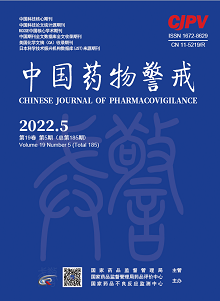|
|
Toxicity of Jingfang granule extract by repeated gavage for 28 days in young rats
XU Jiaoyan, WANG Enli, YU Limei, ZHANG Wei, SUN Ying, ZHANG Guimin
2022, 19(5):
515-521.
DOI: 10.19803/j.1672-8629.2022.05.09
Objective To investigate the toxicity of Jingfang granule extract on newly weaned SD rats after repeated intragastric administration for 28 days, so as to provide reference for the application of Jingfang granule extract in children. Methods A total of 144 newly weaned SD rats were selected and randomly divided into three dose groups of Jingfang granule extract 1, 3, 10 g·kg-1·d-1 and control group (water for injection 0 g·kg-1·d-1), 36 animals in each group, half male and half female. Animals were gavaged with Jingfang granule extract and water for injection at the corresponding concentration at an administration volume of 15 mL·kg-1, once a day, for 28 d, and the drug was withdrawn and recovered for 28 d. During the experiment, the general state of the animals was observed daily, the body weight and food intake of the animals were detected twice a week, the time of foreskin separation, testicular sperm count, and serum testosterone was examined in male mice, and the time of vaginal opening, estrous cycle and serum estrogen were examined in female mice. At the end of the administration period and the end of the recovery period, the animal bone development, nervous system function, learning and memory, growth hormone level, immunoglobulin level, ophthalmology, hematology, blood biochemistry, urology and histopathology were examined respectively. Results There were no abnormal signs related to the test substance in Jingfang granule extract 1, 3 and 10 g·kg-1·d-1 groups, and there was no significant change in body weight and food intake. The hematological indexes WBC, NEUT, LYMPH, MONO and blood biochemical indexes TP, TG, TC, HDL-C, LDL-C and ALB in 10 g·kg-1·d-1 group changed slightly;; and the spleen observed under the microscope can see the "starry sky" phenomenon. Conclusion The administration of Jingfang granule extract to young rats for 28 days does't cause abnormal changes in general signs, body weight, food intake, sexual development, sex hormone level, growth and development and other indexes of animals. Hematological and biochemical indexes change slightly with histopathology, but not considered to be related to the toxic effects of the test substance.
References |
Related Articles |
Metrics
|

